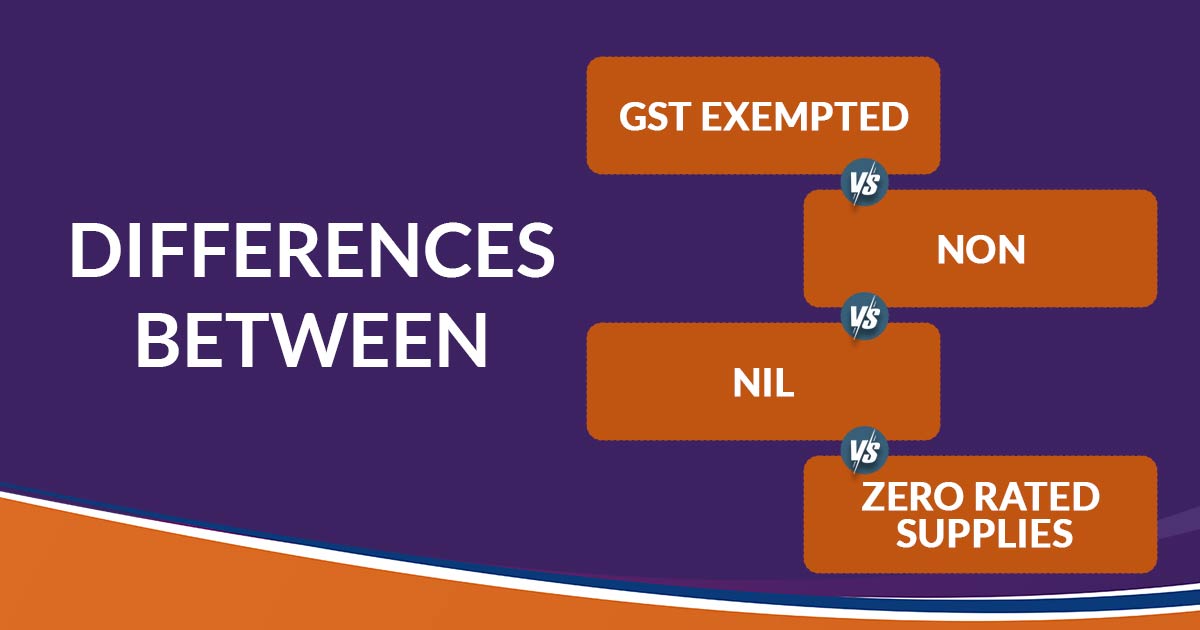
Through the GST, the goods and services are categorized in the Nil Rated, Exempted, Zero Rated, and Non-GST supplies. Let’s see what is the difference between them.
Latest Update
09th August 2022
- After the implementation of GST in India, Bihar and Uttar Pradesh have the highest digit of active and registered taxpayers who have paid zero tax.
Nil GST Rated
The same kind of supply draws a 0% GST. On this kind of supply, there would be no Input tax credit (ITC) claimed. Grains, salt, jaggery, etc. are some of the items that have a nil rate of GST.
GST Exempted
The same supply consists of the items which are utilized for daily purposes. As they are basic essentials they would not be imposed with GST. a person cannot able to avail of the ITC on these supplies. Fresh fruits, milk, curd, etc. are some examples.
Zero GST Rated
Supplies that are provided to the foreign countries to the Special Economic Zones (SEZs) or SEZ Developers arrive beneath the zero-rated supplies. The same draw a 0% GST. towards these supplies, an input tax credit would be availed.
Non-GST Supplies
Those supplies that do not follow GST are said to be Non-GST supplies. But, these supplies would draw the other taxes apart from GST according to the jurisdiction of the state or the country. Petrol, etc are some examples of these supplies.
| Supply | Subjected GST | Supply Type | ITC eligibility | Examples |
|---|---|---|---|---|
| Nil Rated | 0% | Everyday items | No | Grains, Salt, Jaggery, etc. |
| Exempted | – | Basic essentials | No | Bread, Fresh fruits, Fresh milk, Curd, etc. |
| Zero Rated | 0% | Overseas supplies, Supply to Special Economic Zones (SEZ) or SEZ Developers | Yes | – |
| Non-GST | – | Supplies towards which no GST is applicable but draws additional taxes | No | Petrol, Diesel etc. |